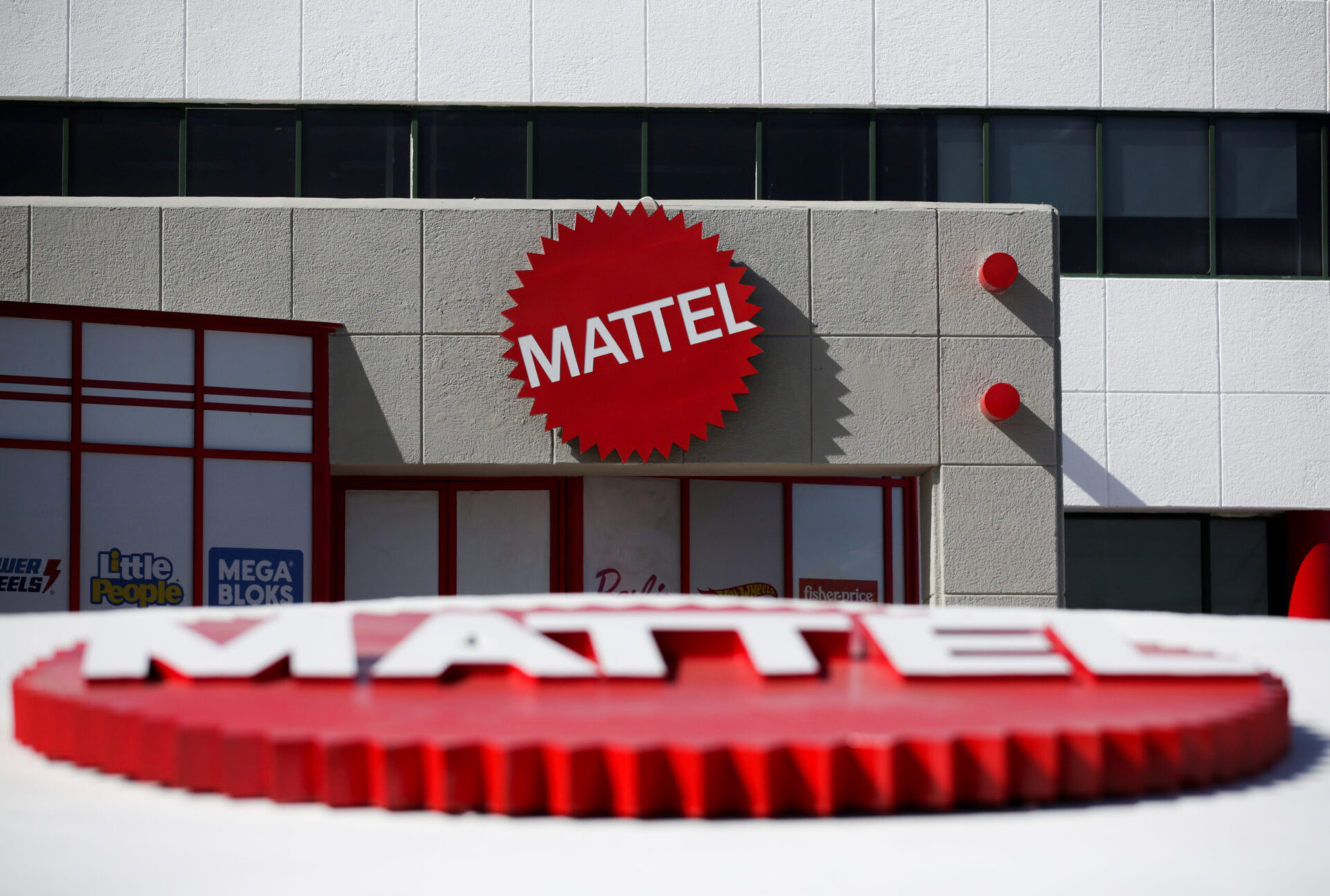Mattel is a global leader in the design, manufacture, and distribution of toys and family products. The company’s portfolio of brands includes some of the most iconic names in the toy industry, such as Barbie, Hot Wheels, Fisher-Price, American Girl, and Thomas & Friends. Mattel’s products are sold in over 150 countries around the world.
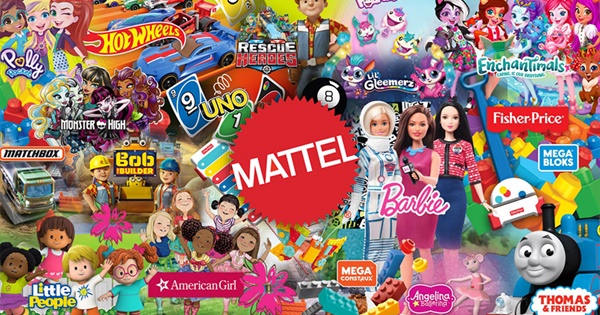
Mattel was founded in 1945 by Harold “Matt” Matson and Elliot Handler. The company’s first product was a picture frame made from picture frame molding that was left over from World War II. Mattel quickly expanded into other toy categories, and by the early 1950s, it was one of the largest toy companies in the United States.
In 1959, Mattel introduced Barbie, the world’s first fashion doll. Barbie was an instant success, and she remains one of the most popular dolls in the world today. Barbie has been praised for her empowering message that girls can be anything they want to be. However, she has also been criticized for her unrealistic body image.
In the 1960s and 1970s, Mattel continued to expand its portfolio of brands, acquiring companies such as Fisher-Price, Hot Wheels, and Ideal Toy. The company also began to produce licensed toys based on popular characters from movies, television shows, and video games.
In the 1980s and 1990s, Mattel faced increasing competition from other toy companies, such as Hasbro and LEGO. However, the company remained profitable by focusing on its core brands and developing new products that were innovative and appealing to children.
In recent years, Mattel has faced challenges from the rise of digital entertainment. However, the company has adapted to the changing market by developing new products, such as Barbie dolls that can be programmed to talk and sing, and Hot Wheels tracks that can be used with smartphones and tablets.
Mattel is committed to providing children with high-quality, innovative toys that help them learn and grow. The company’s products are designed to spark children’s imagination and creativity. Mattel also believes that play is essential for child development, and the company’s products are designed to help children learn new skills and develop social and emotional intelligence.
Mattel is a global leader in the toy industry, and its products are enjoyed by children of all ages around the world. The company is committed to providing children with high-quality, innovative toys that help them learn and grow.
Marketing Strategies of Mattel
Mattel is a well-known American multinational toy manufacturing company, and they employ a variety of marketing strategies to promote their products and maintain their strong presence in the global toy market. These strategies encompass a wide range of activities, from product development and branding to distribution and promotion. Here’s a detailed overview of some of Mattel’s key marketing strategies:
1. Brand Portfolio
Brand portfolio refers to the collection of brands owned by a company, and it serves as a key marketing strategy for Mattel. The company has a diverse portfolio of brands that cater to different segments of the market, allowing them to reach a wider range of consumers. By offering multiple brands, Mattel can target specific demographics, psychographics, and consumption patterns, thereby increasing its market share and customer loyalty.
One of the recent examples of Mattel’s brand portfolio strategy is the acquisition of the rights to produce toys based on the popular franchise, Jurassic World. Under this agreement, Mattel launched a range of toys, including action figures, playsets, and vehicles, that are designed to appeal to children who love dinosaurs and adventure. By adding Jurassic World to its portfolio, Mattel was able to tap into the massive fan base of the franchise and increase its sales. Another example is the relaunch of the classic Polly Pocket brand, which was updated with new designs, accessories, and playsets that appealed to both old and new fans of the brand. This move helped Mattel to reconnect with nostalgic parents who grew up playing with the original Polly Pocket toys and introduce the brand to a new generation of children.
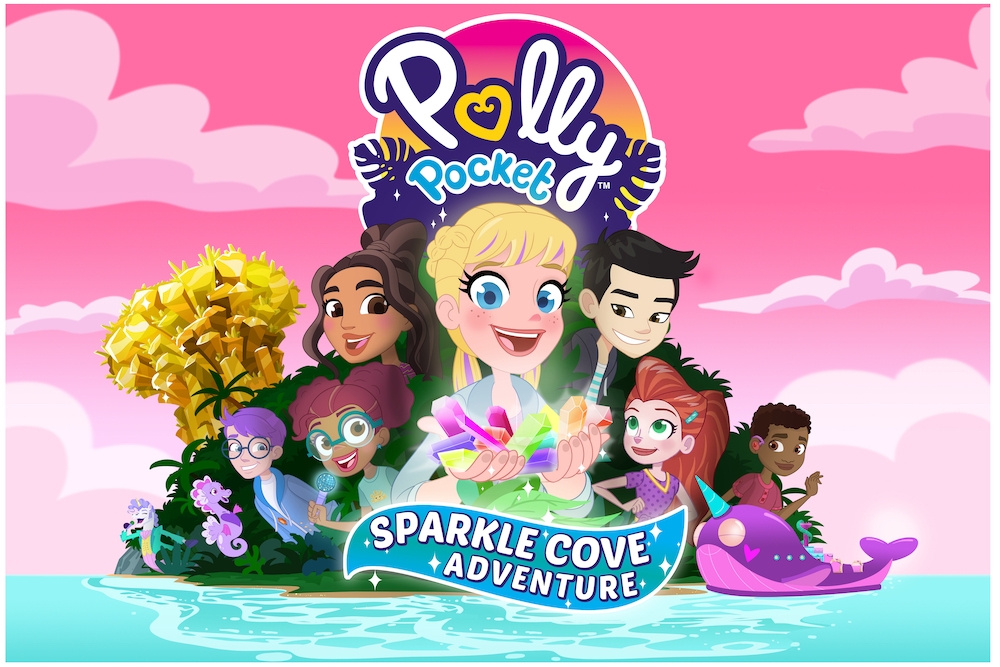
In addition to acquiring new brands and revamping existing ones, Mattel also leverages its brand portfolio to create synergies between its various labels. For instance, the company has launched co-branded products that combine the popularity of two or more of its brands, such as Hot Wheels and Star Wars, or Barbie and Disney Princess. These co-branded products not only generate additional revenue but also expose Mattel’s brands to new audiences, further strengthening their position in the market. Overall, Mattel’s brand portfolio strategy enables the company to stay competitive, innovate, and meet the evolving needs and preferences of its customers.
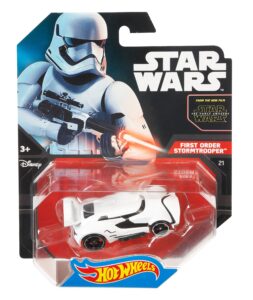
2. Product Innovation
Product innovation is a key marketing strategy for Mattel, which involves introducing new and improved products to keep up with changing consumer preferences and trends. The company invests heavily in research and development to create innovative products that meet the needs and wants of its target audience. From ideation to production, Mattel’s product development process is designed to ensure that every product meets the highest standards of quality, safety, and fun.
One of the latest examples of Mattel’s product innovation is the introduction of the “Hot Wheels ID” line. Hot Wheels ID is a system that uses NFC technology to allow kids to race their cars wirelessly, creating a seamless and exciting play experience. Kids can compete against each other, earn points, and level up, all while learning about physics and engineering concepts. This innovative product has been a huge hit among kids and parents alike, and it has helped to further establish Hot Wheels as a leader in the toy car category.
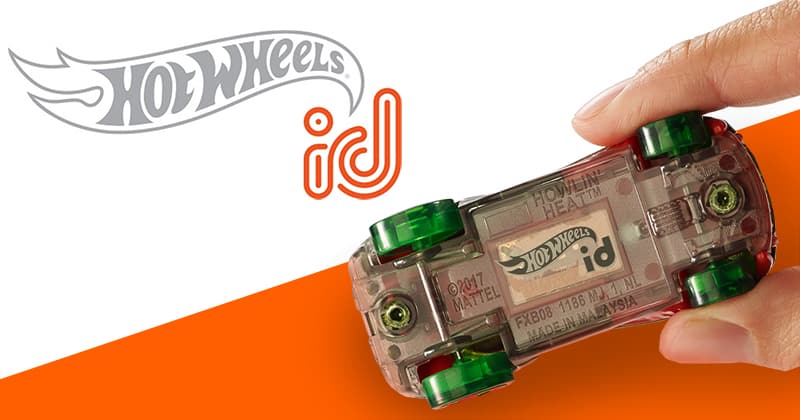
Another example of Mattel’s product innovation is the “Barbie Fashionistas” line. This line features a wide range of dolls with diverse body types, skin tones, and hairstyles, giving girls the opportunity to find a doll that looks just like them. The dolls are designed to promote positive body image and self-esteem, and they come with a variety of outfits and accessories that reflect current fashion trends. The Barbie Fashionistas line has been incredibly successful, as it has allowed Mattel to connect with a new generation of young consumers who value diversity and inclusivity. Through these and other innovative products, Mattel continues to demonstrate its commitment to delivering fun, engaging, and relevant toys that capture the imaginations of children and families around the world.

3. Licensing Agreements
Licensing agreements are a significant marketing strategy for Mattel, whereby the company partners with other organizations to license its intellectual property (IP), such as brands, characters, and patents, to third parties. This allows Mattel to leverage its IP beyond traditional toys and games, generating additional revenue streams and expanding its reach to new customers. Licensing agreements enable Mattel to collaborate with companies in various industries, such as entertainment, apparel, and food, to develop co-branded products that showcase its iconic brands like Barbie, Hot Wheels, and Thomas & Friends.
Mattel’s licensing strategy focuses on partnering with companies that share its values and goals, ensuring that its brands are associated with high-quality products and experiences. One notable example of Mattel’s licensing agreement is its partnership with Netflix. In 2020, Mattel and Netflix announced a multi-year deal to produce animated series and live-action content featuring Mattel’s beloved brands, starting with a new animated series called “He-Man and the Masters of the Universe.” This collaboration allows Mattel to tap into Netflix’s vast subscriber base, exposing its brands to a global audience and attracting new fans. Additionally, Mattel has signed licensing deals with major retailers like Target and Walmart, enabling the company to offer exclusive products and promotions that drive sales and enhance customer engagement.

The benefits of licensing agreements extend beyond financial gains; they also help Mattel to build brand awareness and loyalty. When consumers encounter Mattel’s brands in unexpected places, such as on clothing or in restaurants, it creates a positive association with the brand, fostering affection and recognition. Moreover, licensing agreements often involve cross-promotion opportunities, where both Mattel and its partners can leverage each other’s marketing channels and customer bases. For instance, when promoting a new movie release tied to one of its brands, Mattel can encourage customers to buy related toys and games, while the movie studio can promote the film through Mattel’s platforms. By strategically selecting partners and negotiating favorable terms, Mattel’s licensing agreements contribute significantly to its overall marketing efforts and business growth.
4. Digital Presence
Digital presence is a crucial marketing strategy for Mattel, as it enables the company to connect with its target audience, increase brand awareness, and drive sales. Mattel’s digital presence encompasses various elements, including its website, social media accounts, online advertising, email marketing, and e-commerce platform. The company’s website serves as a hub for all its brands, providing product information, interactive experiences, and entertainment for visitors. Social media platforms, such as Instagram, Facebook, and Twitter, allow Mattel to engage with its audience, share content, and participate in relevant conversations.
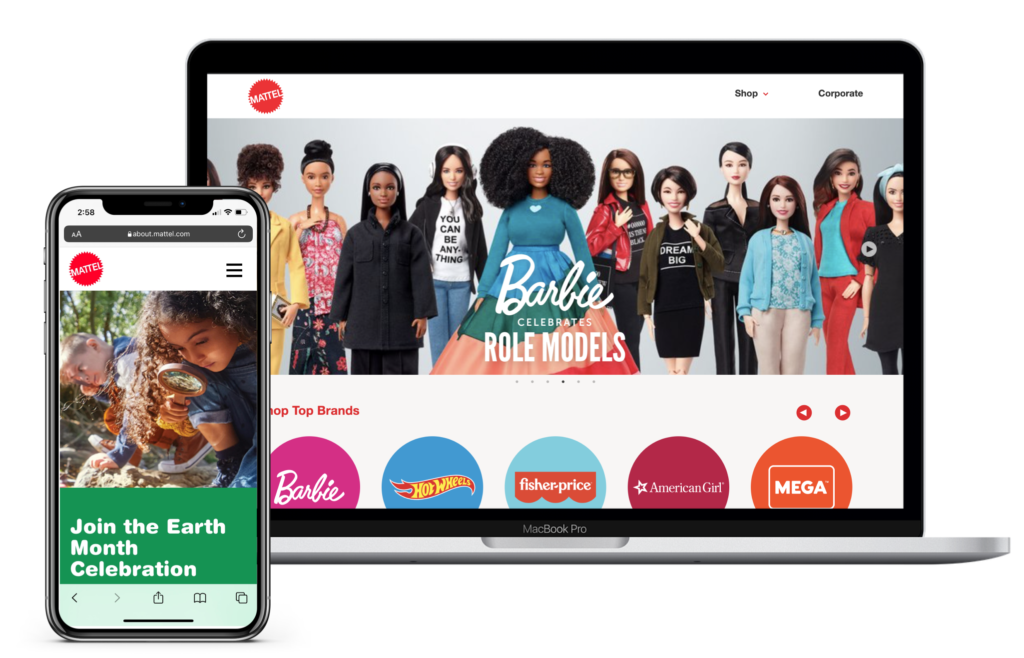
Mattel’s digital presence also involves leveraging influencer marketing, content marketing, and experiential marketing tactics. The company collaborates with popular social media influencers and content creators to showcase its products and reach a wider audience. For instance, during the COVID-19 pandemic, Mattel partnered with influencers to promote its games and puzzles, highlighting how they could be enjoyed at home during lockdown. Additionally, Mattel creates engaging content, such as stop-motion animation videos and unboxing clips, to captivate its audience and encourage sharing on social media.
To enhance its digital presence, Mattel has also embraced emerging technologies like augmented reality (AR) and virtual reality (VR). The company has developed AR experiences that allow kids to interact with its toys in a more immersive way. For example, the “Hot Wheels Augmented Reality Challenge” lets kids race their Hot Wheels cars in a virtual environment using a smartphone app. Similarly, Mattel has created VR experiences that transport kids into fantastical worlds, such as the “Thomas & Friends” VR experience that takes kids on a journey with Thomas the Tank Engine. These innovative initiatives not only delight children but also help Mattel stay ahead of the competition and establish itself as a forward-thinking brand.

5. Content Marketing
Content marketing is a key component of Mattel’s overall marketing strategy, which focuses on creating and distributing valuable, relevant, and consistent content to attract and retain a clearly defined audience. The goal of Mattel’s content marketing effort is to drive profitable customer action, such as purchasing a product or sharing the brand’s message with others. To achieve this, Mattel develops a wide range of content that caters to the diverse interests and needs of its target audience, including children, parents, and collectors.
One of the primary ways Mattel implements content marketing is through its owned media channels, such as YouTube, Instagram, and Facebook. The company creates an array of content, including product demos, tutorials, reviews, unboxing videos, and live streams, that showcase its toys and games in an engaging and entertaining manner. For instance, Mattel’s Barbie channel on YouTube features fashion tips, DIY crafts, and behind-the-scenes looks at upcoming products, while its Hot Wheels channel showcases thrilling car races and stunts. This content not only entertains viewers but also helps build trust and credibility for the brand.
In addition to owned media channels, Mattel also leverages earned and paid media to amplify its content marketing efforts. The company collaborates with popular influencers and content creators to produce sponsored content that reaches a broader audience and generates buzz around its brands. For example, Mattel recently partnered with the popular YouTube channel “Ryan ToysReview” to promote its new line of toys, which resulted in millions of views and increased brand exposure. Furthermore, Mattel uses paid advertising on platforms like Google AdWords and social media to ensure its content reaches its intended audience and drives traffic to its websites and stores. Through its comprehensive approach to content marketing, Mattel effectively builds relationships with its customers, fosters brand loyalty, and ultimately drives sales.
6. Retail Distribution
Retail distribution is a critical component of Mattel’s marketing strategy, which involves making its products available to consumers through various channels. The company has established strong relationships with major retailers worldwide, such as Walmart, Toys “R” Us, and Amazon, to ensure its products are prominently displayed and easily accessible to customers. In recent years, Mattel has focused on expanding its presence in e-commerce platforms, recognizing the growing trend of online shopping among parents and gift-givers.
Mattel’s partnership with Amazon, for instance, has enabled the company to reach a wider audience and increase its sales. The company has created custom content and product listings that showcase its brands and products in a unique way, taking advantage of Amazon’s vast customer base and robust fulfillment network.
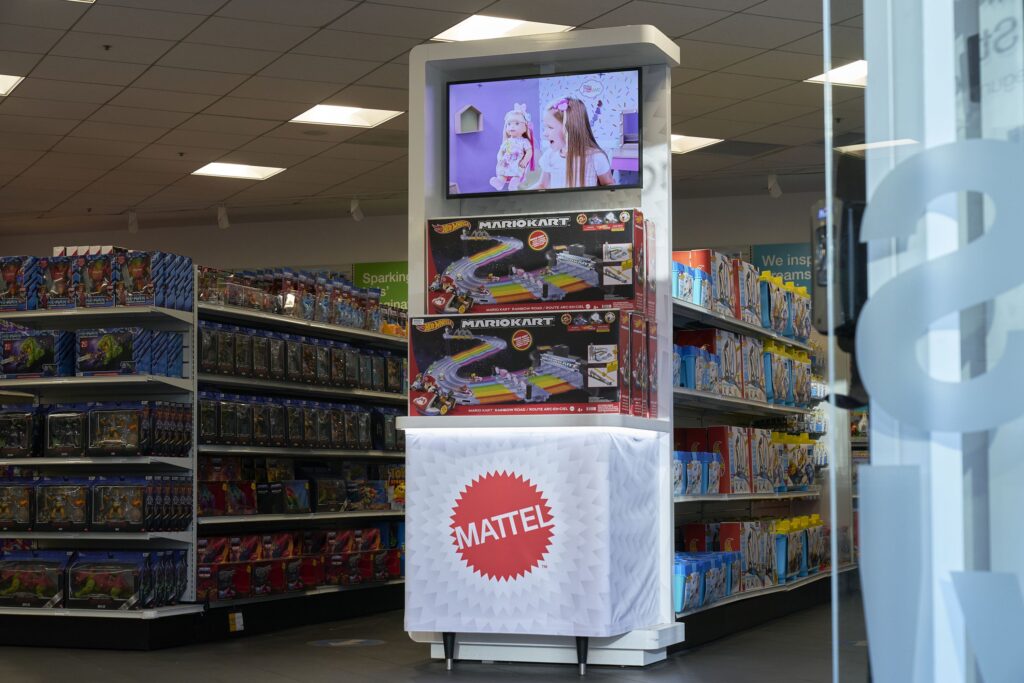
To further enhance its retail distribution, Mattel has implemented several initiatives to improve the in-store experience for customers. For example, it has designed eye-catching displays and signage to draw attention to its products, provided training and support to retail staff to help them better understand and promote Mattel’s brands, and utilized data analytics to optimize product placement and inventory management. By focusing on both online and offline retail distribution channels, Mattel can effectively reach and engage with its target audience, ultimately driving sales and strengthening brand loyalty.
7. Global Expansion
Mattel has expanded its global presence through a variety of means, including establishing local offices and partnerships, tailoring products to meet local needs and preferences, and leveraging e-commerce platforms. The company has a strong presence in North America, Europe, and Asia, and has been exploring opportunities in emerging markets such as Latin America, Africa, and the Middle East. To facilitate its global expansion, Mattel has created locally relevant products and brands, such as the previously mentioned “Boonie Bears” in China.
In addition to product localization, Mattel has pursued strategic partnerships and acquisitions to accelerate its global expansion. For example, in 2018, the company acquired a minority stake in the Indonesian toy manufacturer, Mega Bloks, allowing it to leverage the latter’s existing distribution networks and brand recognition in Southeast Asia. Furthermore, Mattel has collaborated with leading e-commerce platforms such as JD.com in China and Amazon in India to boost its online presence and reach a broader customer base. These efforts have enabled Mattel to mitigate risks associated with international expansion, adapt to local market conditions, and maintain a competitive edge in the rapidly evolving global toy industry.
To further support its global expansion, Mattel has also focused on developing a robust e-commerce strategy. The company has launched dedicated e-commerce platforms in various markets, such as MattelShop.com in the US, to provide customers with a seamless shopping experience and increase brand visibility. Additionally, Mattel has utilized social media and influencer marketing to promote its products and engage with customers worldwide. By combining localized product offerings, strategic partnerships, and effective marketing initiatives, Mattel has successfully expanded its global footprint and enhanced its position as a leading player in the toy industry.
In conclusion, Mattel’s marketing strategies encompass a wide range of activities designed to maintain their position in the competitive toy industry. They emphasize brand diversity, innovation, digital presence, sustainability, and customer engagement to create a strong and lasting connection with their target audience
Marketing Mix of Mattel
The marketing mix, often referred to as the 4Ps (Product, Price, Place, and Promotion), is a fundamental framework for developing and executing marketing strategies. Let’s delve into the marketing mix of Mattel, the global toy manufacturing company:
Product
-
- Product Portfolio: Mattel offers a diverse range of products, catering to different age groups and preferences. Their product portfolio includes iconic brands like Barbie, Hot Wheels, Fisher-Price, American Girl, and more. Each brand includes various toy lines and product categories, ensuring a wide selection for consumers.
- Innovation: Mattel places a strong emphasis on product innovation. They continually introduce new toys and related merchandise to keep their product offerings fresh and aligned with changing consumer trends and interests. For example, they introduce new Barbie dolls with different features and themes regularly.
- Quality: Mattel places a high priority on the quality of their products, ensuring that they meet safety standards and are durable for children’s use. This commitment to quality helps build trust with consumers.
- Licensing: Mattel often collaborates with popular entertainment franchises and licenses their characters and content to create toys and merchandise. This helps create products with built-in demand from fans of those franchises.
Price
-
- Pricing Strategy: Mattel uses a pricing strategy that reflects the quality and value of their products. While some of their premium products, like American Girl dolls, come with higher price tags, they also offer more affordable options within their brands to cater to a broader range of consumers.
- Promotions and Discounts: Mattel runs promotions, discounts, and special offers, especially during the holiday season, to stimulate sales and attract budget-conscious consumers.
- Value Proposition: Mattel’s pricing strategy is often tied to the perceived value of their brands. For example, the higher price of American Girl dolls is justified by their high quality and the premium experience they offer.
Place (Distribution)
-
- Retail Presence: Mattel products are available in various retail outlets, including toy stores, department stores, big-box retailers, and specialty toy shops. They have also expanded their presence in their branded stores and online.
- E-commerce: Mattel has a strong online presence through their own website and third-party e-commerce platforms. Online shopping is a crucial part of their distribution strategy, offering consumers a convenient way to access their products.
- Global Reach: Mattel has a strong international presence, ensuring their products are available in many countries. They adapt their distribution strategy to suit the specific needs of different markets.
Promotion
-
- Advertising and Marketing: Mattel invests heavily in advertising and marketing campaigns to create brand awareness and promote their products. They use various media channels, including TV, radio, print, and digital advertising. Their marketing campaigns are often designed to resonate with children and parents.
- Social Media and Digital Marketing: Mattel actively engages with their audience through social media platforms. They create content such as YouTube videos, web series, and interactive games that not only promote their products but also entertain and educate their target audience.
- Public Relations: Mattel maintains a strong public relations presence to manage their brand image and respond to any issues or concerns that may arise in the media or public.
- Sponsorships and Partnerships: Mattel often partners with organizations and events to promote their products. For example, they may sponsor children’s events or collaborate with influencers to reach their target audience.
- Community Engagement: Mattel also engages in philanthropic activities and community engagement, such as initiatives like the Barbie “Dream Gap Project.” These efforts not only promote their brand but also contribute to social causes.
In summary, Mattel’s marketing mix is well-balanced and tailored to meet the diverse needs and preferences of their target audience. They focus on a wide product portfolio, pricing flexibility, strong distribution channels, and effective promotional strategies to maintain their position in the global toy market.
Also Read: FirstCry – Brand Story, Business Model, Investors and Success Factors
To read more content like this, subscribe to our newsletter
